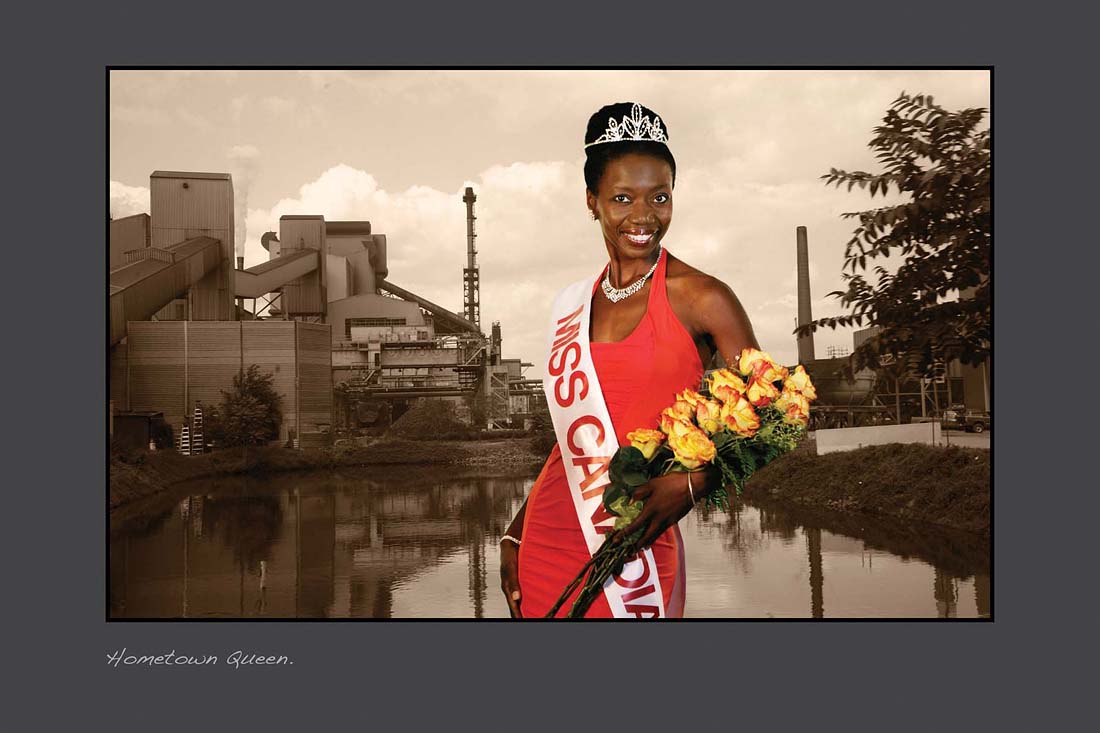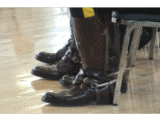
|
Lorna Mills and Sally McKay
Digital Media Tree this blog's archive OVVLvverk Lorna Mills: Artworks / Persona Volare / contact Sally McKay: GIFS / cv and contact |
View current page
...more recent posts
Songs referenced in the novel 'Chronic City' by Jonathan Lethem:
(VB via SM).
| Found Art: Model Predictions of Visible Distortion This is one funny project if you are used to looking at low-rez digital images from an aesthetic point of view. These computational neuroscientists from NYU are working on a model that can predict whether or not an image will appear distorted to the human eye. They don't talk much here about why this kind of modelling is valuable, but I can imagine there are a quite a range of possible uses, not the least of which being a step in the ongoing project of technologically simulating the human brain. But the surface logic of the demo (to a lay observer like me) is so back-asswards that it's extremely cute. There's a jpeg of Einstein, pretty good resolution. Then another that's somewhat compressed and a third that's super pixelated. These images are presented to the model, which simulates some of the neurological stages of vision but mashing different kinds of data sets. See a graph & explanation of the model. The results are blurry jpegs! Yay! And these blurry jpegs tell us whether the original jpegs will appear blurry or not. SO cute. It's totally not an art project, but if it was it would have all the self-reflexive tautology of 70s high-conceptual art combined with the artist/activist DIYtechnology-for-DIYtechnology's-sake aesthetic of online art in the 90s. See the results. |
|
Traffic: Conceptual Art in Canada 1965–1980 September 11–November 28, 2010 (more details below) (The exhibition will travel across Canada in 2011–12) Look at this list of artists! Conceptual art in Canada...whoo-hoo! Vito Acconci, David Askevold, John Baldessari, Bruce Barber, Marcella Bienvenue, Robert Bowers, Wallace Brannen, Tom Burrows, James Lee Byars, Eric Cameron, Colin Campbell, Ian Carr-Harris, Tim Clark, Robin Collyer, Carole Condé and Karl Beveridge, Michael de Courcy, Sylvain Cousineau and Francis Coutelier, Gary Coward, Kenneth Coutts-Smith, Stephen Cruise, Greg Curnoe, Max Dean, Tom Dean, Jean-Marie Delavalle, Jan Dibbets, Christos Dikeakos, Graham Dube, Brian Dyson, Dean Ellis, Michael Fernandes, Gerald Ferguson, Robert Fones, Vera Frenkel, Jeff Funnell, Charles Gagnon, Yves Gaucher, General Idea (AA Bronson, Felix Partz, Jorge Zontal ), Raymond Gervais, Dan Graham, Rodney Graham, John Greer, Hans Haacke, Noel Harding, John Heward (in collaboration with Alex Neuman), Douglas Huebler, Image Bank (Michael Morris and Vincent Trasov), Richards Jarden, Bill Jones, Donald Judd, Pat Kelly, Garry Neill Kennedy, Roy Kiyooka, Robert Kleyn, Joseph Kosuth, Michèle Lalonde, Suzy Lake, Gordon Lebredt, Les Levine, Glenn Lewis, Sol LeWitt, Lee Lozano, Ken Lum, Duane Lunden, Don Mabie, Allan MacKay and Lionel Simmons, Arnaud Maggs, Brian MacNevin, Barry MacPherson, John McEwen, Robin McKenzie, Albert McNamara, Ian Murray, N.E. Thing Co., Gunter Nolte, Dennis Oppenheim, Bruce Parsons, Andy Patton, Harold Pearse, Rober Racine, Yvonne Rainer, Clive Robertson, Ellison Robertson, Martha Rosler, Tom Sherman, Rebecca Singleton, Robert Smithson, Michael Snow, Jeffrey Spalding, Lisa Steele, Françoise Sullivan, David Tomas, Serge Tousignant, Bill Vazan, Bill Vazan with Ian Wallace, Robert Walker, Jeff Wall, Ian Wallace, Theodore Wan, Douglas Waterman, John Watt, Lawrence Weiner, Irene F. Whittome, Joyce Wieland, Martha Wilson, Paul Woodrow, Jon Young, Tim Zuck Conceptual art gets such a bad rap. In some circles, the phrase has become synonymous with boring, didactic and thinky. But lots of those artists in the 60s and 70s were exploring aesthetics in a way that was really funny, sort of dangerous and exciting. One thing that has remained very important to me about the movement(s) is the assertion that artists can understand and manipulate the contexts of reception of their own work. This is something that young curators, critics and art historians really need to be reminded of, especially in the current climate when so many people are scrabbling around trying to locate and claim some form of intellectual authority. Here's some good snippets from the exhibition's "background" information sheet. Both in Canada and globally, Conceptual Art is indelibly marked by the 1960s post-war political unrest that gave birth to anti-war protests and the student, womenʼs, civil rights and gay liberation movements. It was also informed by the emergence of new information technologies such as the television, the fax machine and the computer. Rebelling against the idea that art was a matter of individual expression, special skill, or purely visual and formal concerns, the conceptual movement emphasized art as ʻidea,ʼ in what has come to be known as artʼs linguistic turn.It's a really good time for a comprehensive Canadian history show on this topic. Especially in light of current discussions about immaterial art emerging in the context of online art practices (as well as the dangers of historical erasure from a certain American art critic who is nostalgic about "dominant objects.") Traffic: Conceptual Art in Canada 1965–1980 opens this weekend at the University of Toronto art galleries: Friday, September 10, 2010 |


Camille Turner A golden horseshoe of possibilities 2010 Digital print, 12" x 18"
(RE)Visions with Sandra Brewster, Stephen Fakiyesi and Camille Turner at The Print Studio, 173 James Street North, Hamilton, ON,
September 10 – October 23, 2010
Curated by Sally Frater
Opening reception: Friday September 10, 7:00 pm – 10:00 pm
Featured performance by Miss Canadiana beginning at 7:30 pm


I see your little plastic mounties, Anthony Easton, and I raise you several pairs of shiny new RCMP riding boots.

